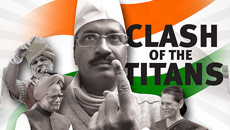The harvest festival is characterized by the folk dance of bhangra, a perfect form of expressing the joy, celebration, and thanking the supreme above.





Three prominent political leaders in India's history – Rahul Gandhi: heir to the Nehru-Gandhi dynasty; Narendra Modi: the controversial, yet popular Hindu nationalist; and Arvind Kejriwal: leader of an anti-graft group that claimed a surprise victory in state elections in India’s capital – will battle on the elections grounds in the upcoming 2014 national elections.

‘Are you seeing anyone?’ they ask. ‘When are you moving out?’ ‘No ring on your finger yet?’ ‘Do I hear the pitter-patter of little feet in the near future?’ No matter how personal or private these matters may be, it doesn’t stop curious friends, family, coworkers – and sometimes even strangers – from having an opinion on the optimal time for these life changing events to occur.

Family bonding and stimulating social playtime are imperative in the social and emotional development during early childhood years.

The season is infamous for showcasing an array of colour palettes, and designers are creating an equilibrium between pastels and vivid colours. Let us introduce your closet to the vibrant, gorgeous colours for the spring season.

In the last 10 years, we have seen talented actors bridging the gap between Bollywood and Hollywood. The fusion of East meets West showcases cultural diversity from all over India and brings communities closer around the world. A pinch of spice from East and talent from the West is the perfect concoction for the production of something great.
Memory loss is a common problem. While most often associated with older individuals, forgetfulness and short-term memory problems are everyday occurrences for the majority of the population.